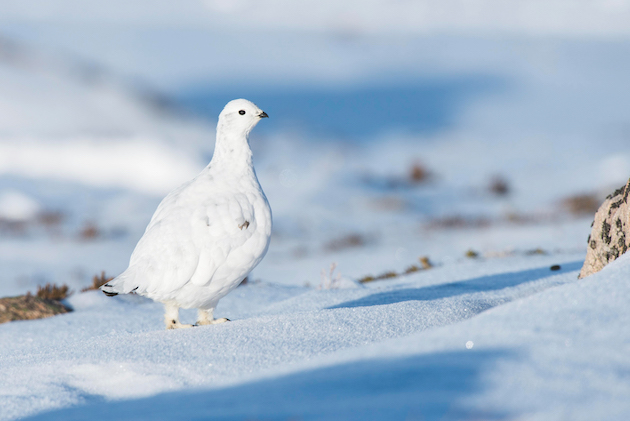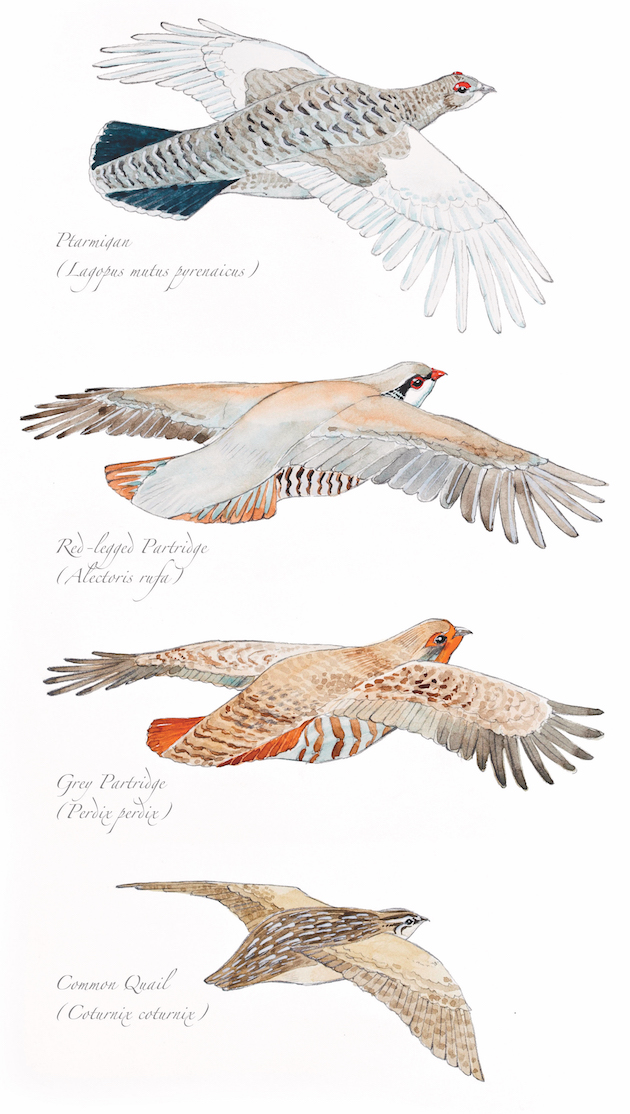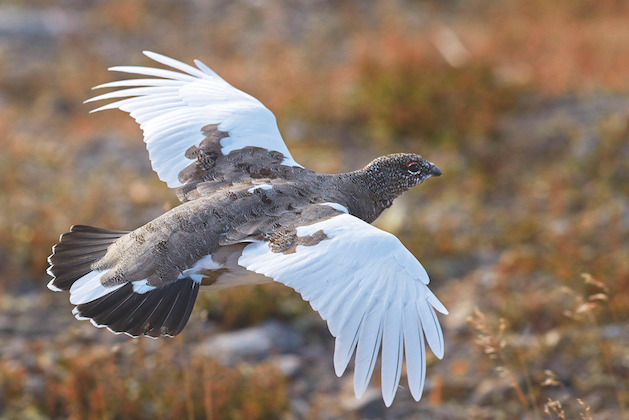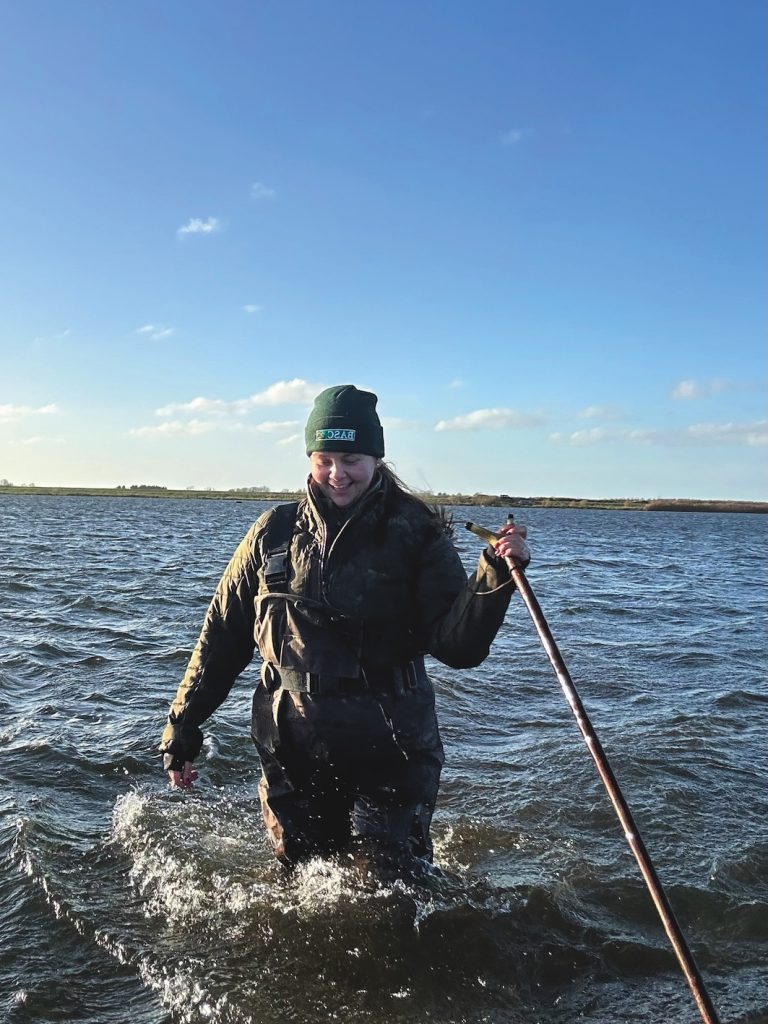Win CENS ProFlex DX5 earplugs worth £1,149 – enter here
The elusive ptarmigan – Britain’s wildest quarry

Of all the gamebirds on the quarry list, there’s none so little known nor seldom shot as the ptarmigan. It may have the same open season as its more familiar cousin, the red grouse, but its favoured terrain — the high tops of Scotland’s tallest mountains — ensure that ptarmigan are never shot by chance.
In the Cairngorms, it’s rarely found below 1,200m, in the north-west Highlands 800m and only in the rugged hills of northern Sutherland is it found as low as 200m. Ptarmigan shooting is not for the faint-hearted.
Victorian sportsman Innes Shand wrote that he saw little to commend ptarmigan shooting other than the scenery and the sublimity of the views,
adding that there was always the risk of a sprained ankle or even a broken leg.
Ptarmigan are generally unused to encountering man, so can often be remarkably approachable, and Shand lamented that on days when
the weather was settled, the birds either sat like stones or ran among the
rocks like red-legged partridges. When the weather was wild and the wind boisterous, the shooting was more of a challenge but Shand was happy to settle for the view and go home.
Where are ptarmigan found?
My own experiences of ptarmigan confirms their tameness. They will often squat, as if assuming that their beautifully cryptic plumage renders them invisible, as it often does.
There’s a classic painting by the celebrated bird artist Archibald Thorburn of ptarmigan shooting. Captioned ‘Where are they?’, it shows a gillie pointing out the crouching covey to the Gun, who is looking hopefully in the wrong direction.
Few people knew ptarmigan as well as the Scottish ecologist and mountaineer Dr Adam Watson, who died last year at the age of 88. He wrote: “When the weather is very severe, with heavy gales, the birds are unwilling to take flight, and they crouch low near the ground facing squalls or sudden waves of drifting snow. Ptarmigan are tamest on sunny calm days, and in such conditions they often allow a man to come within a few yards before flying.”
Watson noted that they are also tamer around noon and early afternoon, when they are resting and dozing, while birds in flocks are much wilder. In contrast, an incubating hen “can sometimes be handled as she sits”.
When it comes to speed of flight, the ptarmigan can certainly match a red grouse. Ptarmigan face few predators on the high tops other than golden eagles and these, according to Watson, they can easily outstrip. When pursued at close quarters they fly close to the ground, turning “quickly around boulders and screes where the eagle cannot easily follow”.
Such flying skills make them equally challenging for the Gun, who may well be out of breath when he finally comes within range — and surprised by their sudden appearance, followed by their equally sudden disappearance.

The ptarmigan, also known as the rock ptarmigan, is slightly larger than a red-legged partridge
Sharp declines
Like red grouse, populations of ptarmigan tend to be cyclic, with years of relative abundance followed by sharp declines. However, because of the demanding nature of their habitat, population densities are usually low and rarely more than one or two birds per 100 acres. In contrast, on the best Scottish moors, autumn densities of red grouse may reach a bird an acre.
Ptarmigan numbers have fallen considerably in the past 100 years and the sizeable bags recorded by the Victorians have never been achieved since. In his book Game Birds and Shooting-Sketches (1892), the sporting artist J G Millais recorded a bag of 60 brace in a single day. They were driven — driving ptarmigan requires beaters who are also skilled mountaineers — but no estate has attempted to shoot driven ptarmigan for very many years.
Millais wasn’t enamoured with driven ptarmigan shooting and he said: “The pleasant way is to go out alone with a lone keeper and a steady old dog, when, if all goes well, a bag of 10 or 15 brace may be secured.”
Crack-brained sportsman
According to a contemporary of Millais, Major H Hesketh-Prichard, it was possible to drive ptarmigan. “But as far as my experience goes, this is merely a matter of getting one or two shots. The line of flight of the covey is by no means certain. It is only once in three years or so that some crack-brained sportsman desires a day’s ptarmigan shooting after the stalking season. Still, these impromptu drives are, to my mind, more interesting than the set drives of the lowlands.
“I yield to no one in my joy in a day’s ptarmigan driving, for especially as I grow older my mind goes back with just as much, perhaps more, pleasure to the little days, when one lurked behind a rock and a single attendant drove the top.”
One of the fascinating features of the ptarmigan is that it is the only British bird with three plumages — breeding, non-breeding (autumn) and winter. It retains white wings throughout the year, separating it from the red grouse, and in spring the upper plumage is a dark grey-brown and black, with fine vermiculations of olive-brown and black.
In late summer, the birds appear much greyer, before moulting into their all-white winter plumage. They always retain a black tail. In Scotland, birds start to moult into their winter finery in October, but it is rare for individuals to be completely white before the shooting season ends on 10 December.

the rock ptarmigan is capable of outstripping one of its main predators, the golden eagle
Hardy and robust
Col R F Meysey-Thompson, writing in his book, The Gun at Home and Abroad, warns: “It is after ptarmigan have assumed the winter plumage that the task of seeking them becomes both dangerous and arduous, when the winter snow lies deep and mist, snow storms and extreme cold have to be faced. It needs a hardy and robust constitution to withstand the rigours of the climate and to find pleasure in doing so.”
Anyone who wants to shoot a white ptarmigan would be best advised to head for Iceland or Norway rather than Scotland. Scotland’s ptarmigan are a relict Arctic species, left over from the Ice Age, so it’s hardly surprising that they are declining in our warming climate.
Historically, they were to be found in the Lake District, along with south-west Scotland, Arran and Rhum, but they have long since gone from these localities. They were lost from the Outer Hebrides as recently as 1950.
One thing is absolutely certain — shooting isn’t to blame for their decline. Adam Watson noted that as a sport, ptarmigan shooting “seems to be a shade too strenuous for the modern taste”. He wrote that more than half a century ago, but it is equally true today.
Related Articles
Get the latest news delivered direct to your door
Subscribe to Shooting Times & Country
Discover the ultimate companion for field sports enthusiasts with Shooting Times & Country Magazine, the UK’s leading weekly publication that has been at the forefront of shooting culture since 1882. Subscribers gain access to expert tips, comprehensive gear reviews, seasonal advice and a vibrant community of like-minded shooters.
Save on shop price when you subscribe with weekly issues featuring in-depth articles on gundog training, exclusive member offers and access to the digital back issue library. A Shooting Times & Country subscription is more than a magazine, don’t just read about the countryside; immerse yourself in its most authoritative and engaging publication.







